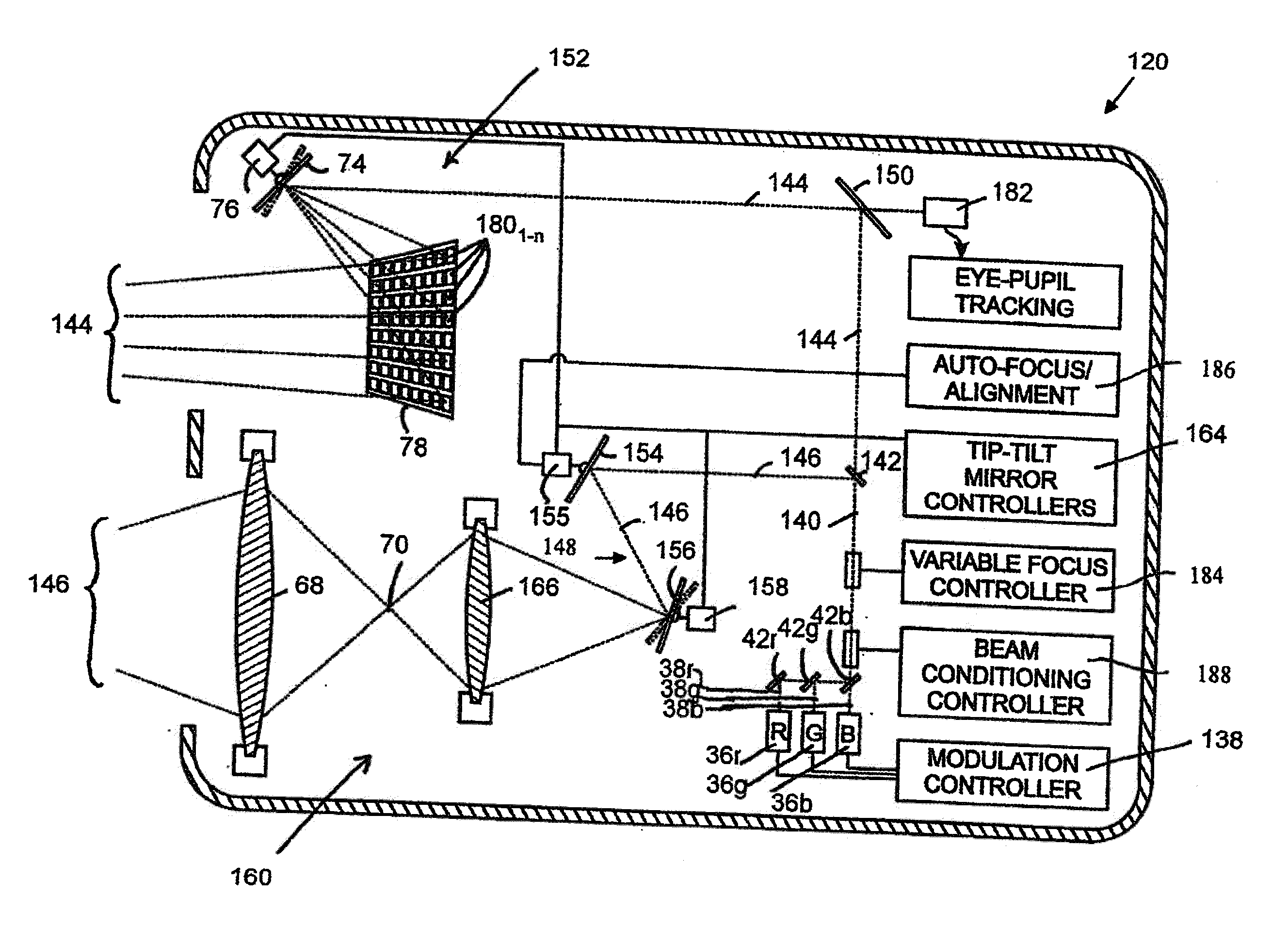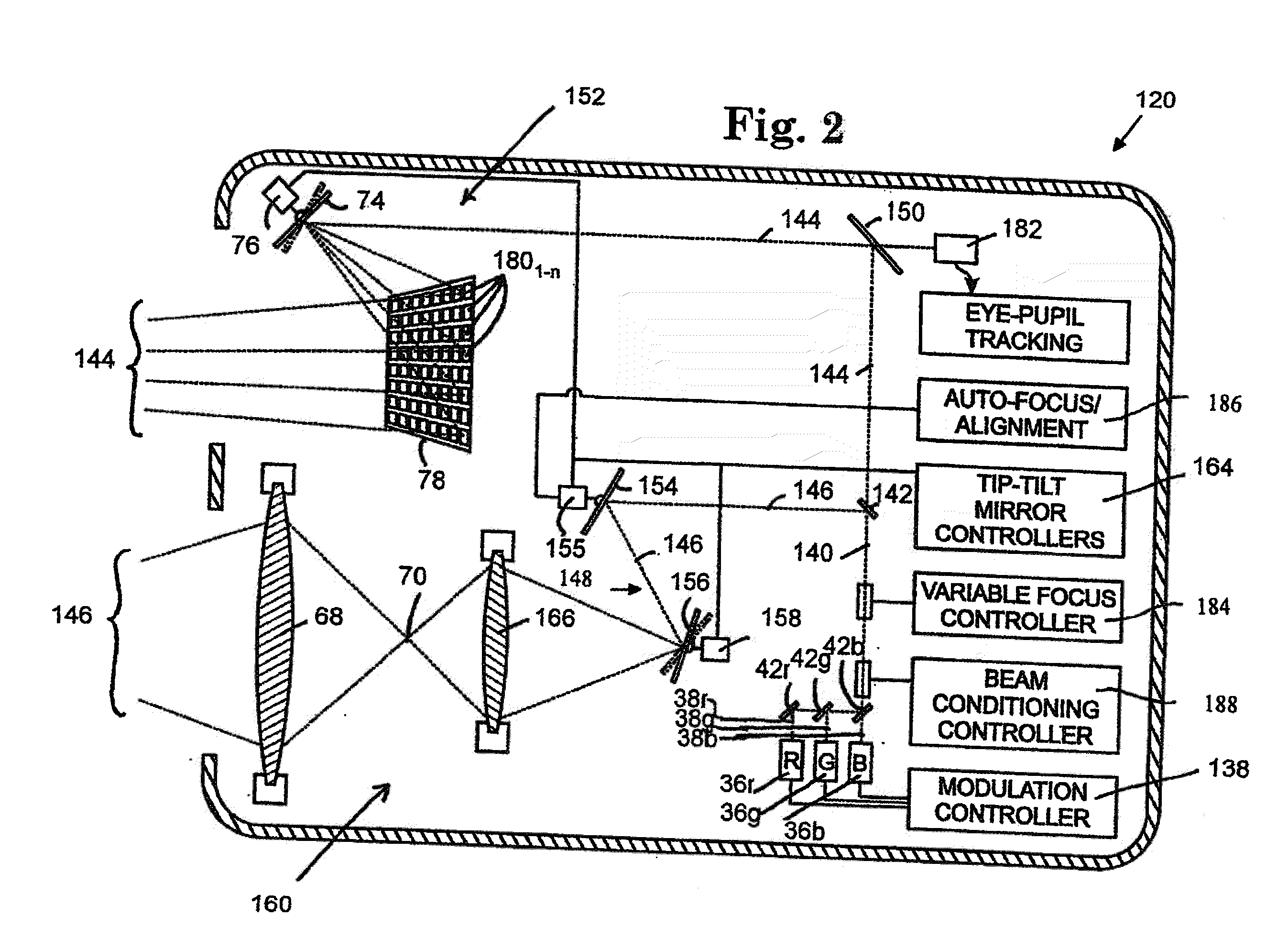Near to Eye Display System and Appliance
a display system and eye display technology, applied in the field of eye display systems, can solve the problem that the flicker is believed to be unnoticeable to most people above about eighty frames per second, and achieve the effect of compactness, compactness and economics
- Summary
- Abstract
- Description
- Claims
- Application Information
AI Technical Summary
Benefits of technology
Problems solved by technology
Method used
Image
Examples
example mapping
Procedure
[0707]FIG. 18 shows an example method for mapping a proximal optic and projector system onto a pixel layout (representing, for example, the field of view of a user of the system), where the proximal optic contains two types of redirectors, one to cover the central (foveal) field of view and one to cover the peripheral field of view. In practice, there can be multiple types of redirectors and multiple projector systems for each type. The mapping procedure is believed extensible, provided that the projectors and proximal optic provide full coverage of light to the desired pupil sphere.
[0708]Assume again for clarity that the pixel layout is rectangular, arranged in an X×Y layout with X pixels in the horizontal direction and Y pixels in the vertical direction. Assume further that the projectors are adjustable in two degrees of freedom, namely horizontal and vertical, and that these degrees of freedom can be specified in discrete quantities, say H different horizontal positions ...
example mid
-Level Processing
[0727]The above mapping and scanning procedures provide low-level (within an image frame) examples. FIG. 23 shows an example mid-level (between image frames) processing routine. It starts with the 2300 process next image frame, doing the appropriate processing (as discussed above) to scan the next image frame onto the retina. This step may be repeated some number of times, depending on the refresh rate.
[0728]At this point, certain changes to the user's eye may be checked for. For instance, 2310 has the pupil location changed (as detected by the pupil tracker 1740)? If so, the image displaying may need to be suspended or placed in a holding mode until the new pupil location on the pupil sphere can be predicted or determined (by the pupil tracker 1740), the appropriate image data obtained or reprocessed by the image processor, and new frame data built. In addition, 2320 has the head location changed (as detected by the head tracker 1730). If the head location is being...
example origins
of Light
[0791]Turning now to FIG. 34a-d and 35a-d, four exemplary light sourcing configurations are shown. Referring to FIG. 34a, light is modulate and optionally varied in color as it is sourced before being conditioned. The optional combining of beams step in FIG. 34a is shown in FIG. 35d, where a series of beamsplitters serves as an example of a way to combine multiple sources into a collinear beam. It will be understood throughout that if sources are able to deliver a single beam with the desired wavelength or more general spectral density, then combining multiple beams in this way may be obviated; similarly, handling beams of different color separately is also anticipated and as has been mentioned elsewhere here.
[0792]In some examples a source may be split and then each part separately modulated as shown in FIG. 34c; multiple instances of FIG. 35a would provide the structure, one for each split.
[0793]Referring to FIG. 34b, the modulation step is separate from the sourcing and o...
PUM
 Login to View More
Login to View More Abstract
Description
Claims
Application Information
 Login to View More
Login to View More - R&D
- Intellectual Property
- Life Sciences
- Materials
- Tech Scout
- Unparalleled Data Quality
- Higher Quality Content
- 60% Fewer Hallucinations
Browse by: Latest US Patents, China's latest patents, Technical Efficacy Thesaurus, Application Domain, Technology Topic, Popular Technical Reports.
© 2025 PatSnap. All rights reserved.Legal|Privacy policy|Modern Slavery Act Transparency Statement|Sitemap|About US| Contact US: help@patsnap.com



